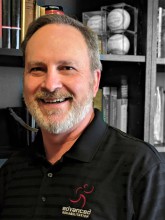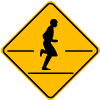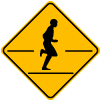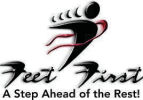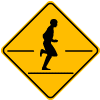OCTOBER 2022 Page #2
Dr Rhee
1113 Assembly Dr. Tampa, FL 33607
Email: pctampabay@gmail.com
Dr. Rhee has been a chiropractor for over 17 years. Previously appointed to be the team chiropractor for the Tampa Bay Bucs from 2015-2018, now residing in a new office in Midtown Tampa (Physical Chiropractic), Dr. Rhee sees a multitude of patients, treating all different issues ranging from minor adjustments to post-operative care.
Dr. Rhee has introduced many new and advanced treatment techniques to the Tampa Bay area, such as PiezoWave (Shockwave) therapy, Active Release Technique (ART), and the utilization of hyperbaric oxygen chambers (HBOT).
With the new approaches to therapy and unique modalities utilized by Dr. Rhee, he has been told by many patients to be a one-of-a-kind doctor!
Questions & Anwsers Page 2
Q: What is Chiropractic care?
A: Chiropractic care is a form of alternative medicine concerned with the diagnosis, treatment, and prevention of mechanical disorders of the musculoskeletal system, especially of the spine.
Q: How do I know if I need chiropractic care?
A: If you are experiencing any long-term aches and pains or have had any recent injuries, chiropractic care may benefit you. At Physical Chiropractic, we treat more than just neck and back pain. We see a wide variety of patients with different injuries to all parts of the body.
Q: What is the popping sound during my adjustment?
A: During an adjustment, the popping sound you hear is caused by gas shifting in the joint space due to the pressure within the joint, similarly to when cracking one’s knuckles. Keep in mind, not all patients hear a popping sound, nor is it a sign if the adjustment is working or not.
Q: How often can I get a chiropractic adjustment?
A: Studies have shown that receiving a chiropractic adjustment once a week can benefit overall spine health and can help restore normal alignment.
Chris Arrigo, MS, PT, ATC
www.pro-activephysicaltherapy.com
Chris is the owner of both Advanced Rehabilitation and Pro-Active Physical Therapy in Tampa, Florida. He is also a recreational runner who has completed over 12 marathons and enjoys multi-day challenge races. He earned his degree in physical therapy from Langston University in Langston, Oklahoma and after over 30 years of experience treating and rehabilitating athletes continues to enjoy helping people at all levels of competition return to the activity they enjoy. Chris also holds a Master’s degree in Exercise Physiology from the University of Kentucky and a Bachelor’s degree in Movement Science and Physical Education with a Specialization in Athletic Training from The Florida State University. He is a member of the National Athletic Trainers Association, the Private Practice and Sports Sections of the American Physical Therapy Association and a member of the American Sports Medicine Fellowship Society.
Prior to starting Advanced Rehabilitation, Chris worked as the Rehabilitation Coordinator for the Texas Rangers Baseball Club in Arlington, Texas and was the clinical coordinator at the HealthSouth Sports Medicine and Rehabilitation Center in Birmingham, Alabama, working with legendary sports medicine surgeon Dr. James Andrews. After completing his graduate studies, Chris worked as the Assistant Coordinator of Athletic Training and Sports Medicine at Oklahoma State University in Stillwater, Oklahoma.
Chris is a noted author, researcher and speaker on numerous sports rehabilitation and injury management topics. His research focuses on the rehabilitation of throwing and ACL injuries. Chris has received professional awards for excellence in research from the Journal of Athletic Training and the Sports Physical Therapy Section of the American Physical Therapy Association and written or co-authored over 55 textbook chapters and professional journal articles covering multiple topics in the fields of orthopaedic and sports rehabilitation.
QUESTIONS AND ANSWERS PAGE 2
Q. My doctor said that I should stop running
What do I do next?
Answer: Find another doctor. Well at least get another opinion. Make sure that you seek out a sports medicine provider that specializes in dealing with athletes, preferably runners. That could be a physician or physical therapist. In my experience the answer to running related musculoskeletal or joint pain is RARELY to tell someone to stop running. It’s akin to the old joke when a patient says to their doctor, “doc it hurts when I do this.” And the response back from the doctor is, “well then don’t do that!” Bad medical advice or at least flippant commentary meant to be glib but is truly incomplete and uncaring to a runner. The truth is that if you don’t see someone that runs or understands athletes you can get dismissed or labeled “a crazy runner.” All too often we as medical professionals dismiss the need for a runner to find an avenue back to the road as unnecessary when we don’t take the time to listen to our patients and understand the importance running plays in their health and wellbeing. So, runners, if you have running related pain in your low back, hip, hamstring, knee, lower leg, foot or ankle and you see a medical professional and the first thing you are told is to give up running. Seek another opinion. I’m not saying that laying off or even stopping running isn’t sometimes appropriate advice; but it is rarely the first advice any runner with running related pain should expect. I have been an Athletic Trainer and Physical Therapist for almost 40 years, and I can count two hands the number of times I have told a runner to stop running.
Q. Does running cause arthritis?
Answer: No. No running does not cause arthritis. This is one of the worst myths ever blamed on running. All too often medical professionals themselves perpetuate the falsehood that if you run you are going to develop arthritis. Particularly arthritis of the knees or hips. The research, and there is plenty of research supporting this, is that runners have some of the lowest rates of joint arthritis across the population. In fact, the number one predictor for developing hip and knee arthritis is BMI – Body Mass Index. The higher your BMI the greater your chance of developing joint arthritis. And since runners have a lower BMI, in general, the risk of running induced arthritis is so low that running should never be blamed for someone developing arthritis. Or worse, no one should ever be persuaded to stop running because it is going to lead to arthritis. Not accurate and unsupported by any solid medical research.
Q. I’ve been told that I need orthotics – Do I?
Answer: The answer to this question is not as cut and dry as others. Orthotics are inserts for your shoes that are designed to help address pain or control a biomechanical problem. These can either be custom made tailored just for your foot or bought off the shelf from a running store or the internet. For all of the types of orthotics available you would think that there is a lot of evidence behind their efficacy. Unfortunately, this couldn’t be further from the truth! This is particularly true of custom-made orthotics. There is virtually no evidence that high-priced, custom orthotics are any more effective than their inexpensive off the shelf cousins. Just because someone says you over-pronate; does NOT mean you need an orthotic. Chances are you have had the same amount of pronation now as you had 1-2-5-10 years ago, so why suddenly do you need to have a special made insert? I cannot tell you how many runners have come into my clinic with a bag full of orthotics – none of which they use or seem to work for their problem. Understand that I am not saying that orthotics is never appropriate or never work, but as a runner apply some common sense. First try an over the counter, off the shelf orthotic. A lot of times this is sufficient to help manage your issue either permanently or as a transitional insert until your symptoms resolve. If you believe that custom orthotics are indicated for you a few words of advice: 1. Have your orthotics made by someone that regularly constructs inserts for athletes. 2. Ensure that the orthotics have a money back guarantee if you are not satisfied if they don’t fit correctly or if they don’t fix your problem. 3. Never pay more than $300.00 for a pair of orthotics. Finally, please remember that just sticking an insert into your shoe is rarely going to completely resolve any problem and should only be used as part of a comprehensive strategy to correct any issue or problem.
Q. Is there anything I can do to prevent running injuries from happening?
Answer: Absolutely. 50% of all recreational runners experience a running related injury that causes them to miss time on the road at some point. Most of these injuries are preventable and could be prevented or their impact minimized with a few simple adjustments to your week. The 3 critical components to running injury free include: 1. Adding strength training to your week. Most people think of running as an endurance sport. I promise you that it is a strength sport and that the stronger you are the better you will run with less pain. The good thing is that you only need to devote 45 minutes twice a week to a program that is tailored for runners to make an impact. This should focus on strengthening the glutes, hips, and calf musculature in compound movements. 2. Plyometrics. Adding simple bounding and jumping exercises can make a huge difference in power and explosion. 3. Mobility is a must! The issue with most of us when it comes to mobility is that we don’t like doing it. The problem is not doing it can lead to issues that develop over time and are more difficult to identify and resolve. The other imperative that most runners neglect is that some form of mobility needs to be performed routinely as part of the warmup, cool down and also periodically through the day.


